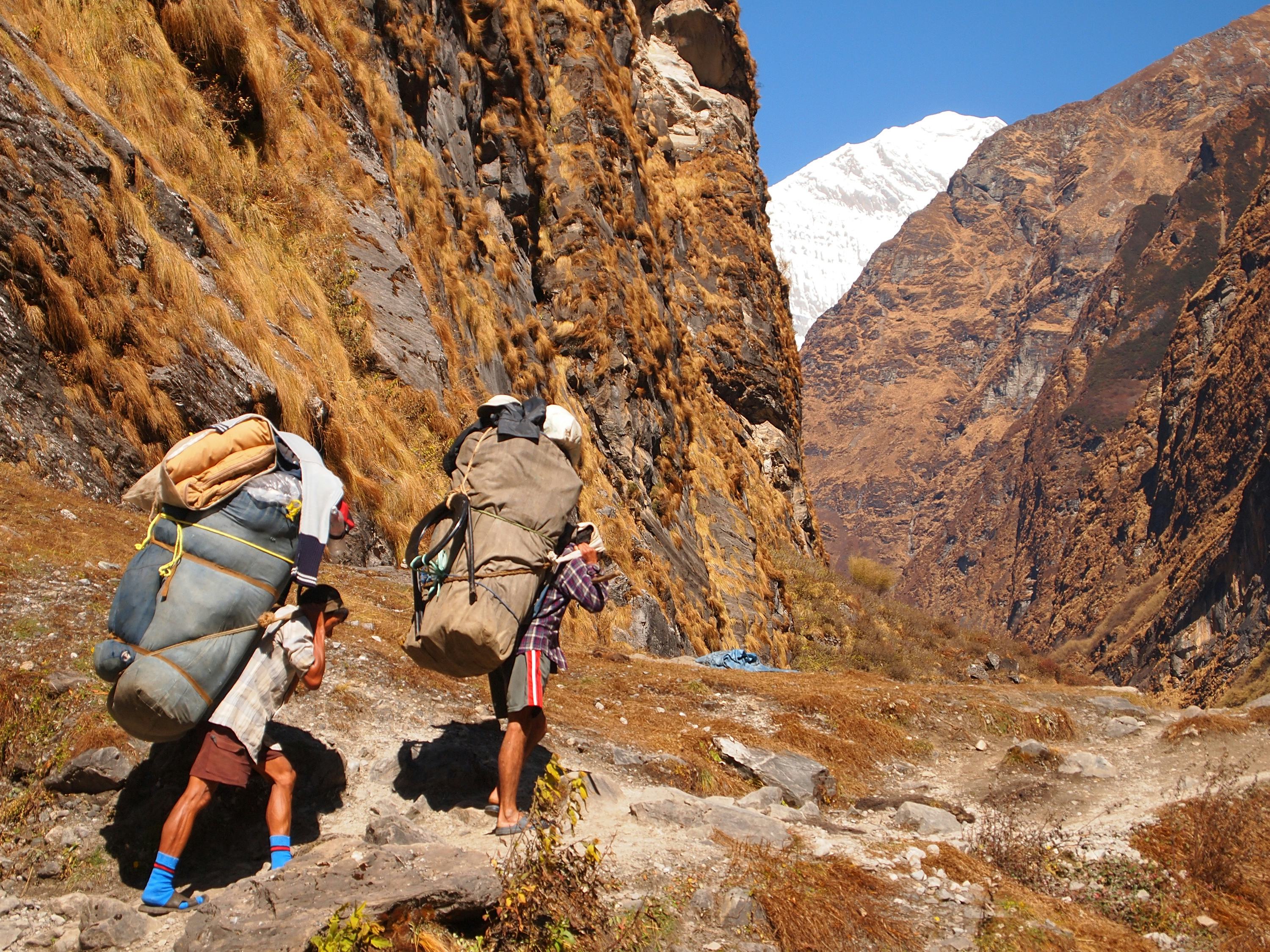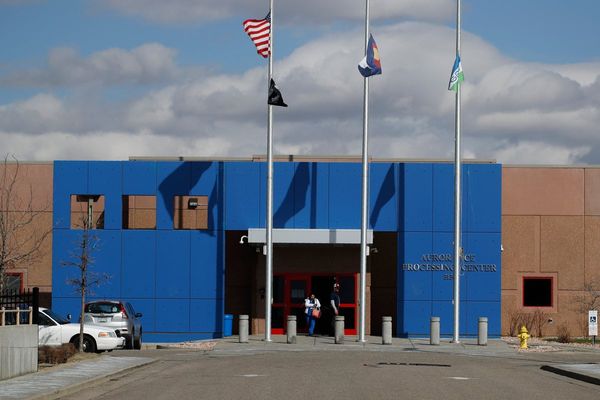
The Tibetan Plateau, also known as the “roof of the world” and Earth’s Third Pole, is not exactly the easiest place to eke out a living. The high-altitude plain sits more than 13,000 feet above sea level, making each breath there contain a third less oxygen than the same breath at sea level.
But those extreme conditions haven't stopped humans — both ancient and modern — from making the Tibetan Plateau, which sits right in the heart of Asia between India and China, home. According to archaeological evidence, the first residents were the Denisovans, one of the archaic humans spanning Siberia and southeast Asia, who likely lived along the plateau’s northeastern regions. Thirty thousand to forty thousand years later, modern humans popped, endowed with the EPAS1 gene from a Denisovan ancestor, allowing their bodies to thrive despite limited oxygen.
Stitching together the grand evolutionary family tree of the Tibetan Plateau — the roots connecting Denisovans to early humans to those in the modern day — has been an active area of research for scientists. And while we’ve got down the broadest trunks of that tree, there are still so many braches left to draw, Melinda Yang, assistant professor of biology at the University of Richmond, tells Inverse.
“We have a lot of really good broad strokes about big groups that, I think, represent a good sense of major things occurring in a couple of places [such as the southwestern region of the Tibetan Plateau],” she says. However, what’s been lacking is a more granular snapshot of the breadth and diversity of human evolution across this very expansive 960,000 square mile of raised terrain, particularly before 2,000 years ago.
Now we may have some answers to that. In a paper published Friday in the journal Science Advances, Yang and her colleagues at various research groups across China as well as the University of California, Merced, found that ancient humans across the Tibetan Plateau share a single origin hailing from northeast Asia that, at some point 5,000 years ago, converged with another unknown, “ghost” population — a group of ancient humans out there somewhere that hasn’t been sampled yet — harboring many different Asian lineages.
“[This study] is very exciting,” Xinjun Zhang, assistant professor of human genetics at the University of Michigan Medical School, who was not involved in the study, tells Inverse. “It’s confirming a lot of hypotheses people have had and bringing up some new possibilities [scientists] wouldn’t have thought about before.”
Resolving a patchy history
So far, what’s known about the evolutionary history of the Tibetan Plateau has largely been based on studies looking at the peoples of its southern edge, although archaeologists suspected the northeastern region housed the first permanent settlements created around 5,000 years ago, perhaps even as far back as 100,000 years but Yang says that’s been hotly argued.
“There’s a lot of debate among archaeologists about the degree of occupation, like whether there were ventures into this area, but they were more temporary by hunter-gatherers,” Yang explains. “The only time of what you can firmly establish that a settlement was occupied permanently was starting around this time period… [of] the first millet farming [around 5,000 years ago] associated with a northeast Asian connection… and then, later on, wheat and barley farming.”
What’s recognized is that modern-day Tibetans, based on genetic studies of ancient humans from the Himalayas in the south of the plateau, share a common ancestry that first appeared 3,400 years ago. After that time, genetic lines started shifting ever so slightly as people migrated from the lowlands and across the plateau as farming took off, especially as complex societies started forming around 2,500 years ago and empires were built, such as the Tibetan Empire, which spanned 629 to 842 A.D.
But here’s the thing: Did this common ancestry really start 3,400 years ago? Scientists had not yet discovered any ancient human remains before then to suggest that definitively. On top of that, it was puzzling why ancient peoples on the Himalayan edge of the plateau shared a similar ancestry with modern-day Tibetans and how the northeastern influence fit into the genetic puzzle.
Common Tibetan ancestry started around 5,000 years ago
To answer those questions, a team of researchers headed by Qiaomei Fu, professor of vertebrate paleontology and paleoanthropology at the Chinese Academy of Sciences (and Yang’s postdoctoral advisor), have spent the last several years excavating archaeological sites and searching previous archives for missing or any overlooked archaic DNA that could help them fill up the evolutionary patches.
They ultimately homed in on 89 ancient individuals from 29 archeological locations across the Tibetan Plateau — western, southwest, southern, southeast, central, and northeast — the oldest sample of which dated back as early as 5,100 years ago.
What they found were some distinct genetic patterns that crop up before 2,500 years ago associated with Tibetan populations living in the northeastern, southern/central, and south/southwestern regions of the plateau. For instance, in the northeastern region, among populations younger than 4,700 years ago, there seemed to be an influx of East Asian gene flow into the lowland regions of the plateau until the present day.
“Our story for the northeastern plateau is that very soon, you do have additional northern East Asian ancestry that enters in the lowland regions but doesn’t seem to really affect the highland region,” says Yang. “So that was definitely a heavy interaction zone [between] those millet farmers and the earliest plateau population.”
For ancient Tibetans living along the Yarlung Zangbo River (in the present-day Tibet Autonomous Region), there was a shared ancestry between three groups across different time points: The southern/southwestern populations dating to 3,400 years ago, western populations from Ngari Prefecture in China dating to 2,300 years ago, and southeastern populations from Nyingchi Prefecture in China dating to 2,000 years ago.
Yang says the southern/central region of the Tibetan Plateau had a very different ancestry from the northeast or southern edges but only up to younger than 2,000 years ago.
“We had some individuals from younger than 2,000 years ago [who] shared more ancestry with the southern plateau populations, and you see the influence of the southern plateau ancestry spread a little bit further north,” she says. The timing of all this, she says, fits nicely with the growth of the Tibetan Empire.
“[These findings] are a reflection of how, historically speaking, a lot of growth of similarities across various humans groups is tied to state building, more interconnectedness, and gene flow that makes it harder to see the regional histories that were vibrant prior to that,” says Yang.
But the most crucial finding was that this shared ancestry among the different Tibetan groups likely started around 5,000 years ago, which is when the EPAS1 gene appears to have entered the gene pool, steadily increasing over the past 2,800 years. The EPAS1 gene makes a protein that allows the body to better utilize oxygen when levels fall. There’s evidence that other humans living at high-altitude like some Andean populations, also carry the gene.
“Older than 2,500 years ago, [EPAS1 gene frequency] was at about 36 percent, and from 2,400 to 1,900 years ago, we see an estimated percentage of about 60 percent,” says Yang. “Today, it’s about 86 percent [in modern-day Tibetans].” (These percentages, she clarified, are based on higher elevation regions.)
What’s next? Finding more missing ancestors
While these findings help flesh out the ancient Tibetan evolutionary tree, Yang says there are likely more unknown ancestors who mingled 5,000 years ago or earlier, contributing to the gene pool — a ghost population not yet discovered that appears to be made up of several different Asian lineages.
“One of the things everybody shares here is the same ancestry, this deeply diverged ancestry, and a northern East Asian ancestry. This means that it occurred prior to 5,000 years ago,” she says. “One of the things to note about this deeply diverse ancestry is [that] it’s something modern human-like, but it’s from a ghost population that we haven’t sampled yet.”
So the biggest next question would be to locate that group (or groups), find out where they met (whether on or off the Tibetan Plateau), and maybe their relationship with Denisovans co-existing at the time.
“When we look at any signs of Denisovan ancestry in these ancient humans, we find that they show very similar levels as present-day East Asian populations, which is super tiny amounts that don’t suggest they had additional encounters with Denisovan populations outside of what East Asians have typically shown,” says Yang.
Since modern-day Tibetans have Denisovans to thank for their high-altitude superpower, uncovering the identity of this missing ancestor would help scientists figure out exactly when the gene crossed over to humans, says Zhang of the University of Michigan.
“I think the origin of these Tibetan populations, we’re going to find it somewhere in the eastern or southern regions of the plateau, but not on the plateau because, archaeologically speaking, it does seem like they were very dense populations,” says Yang.
Until then, it’s happy digging.







